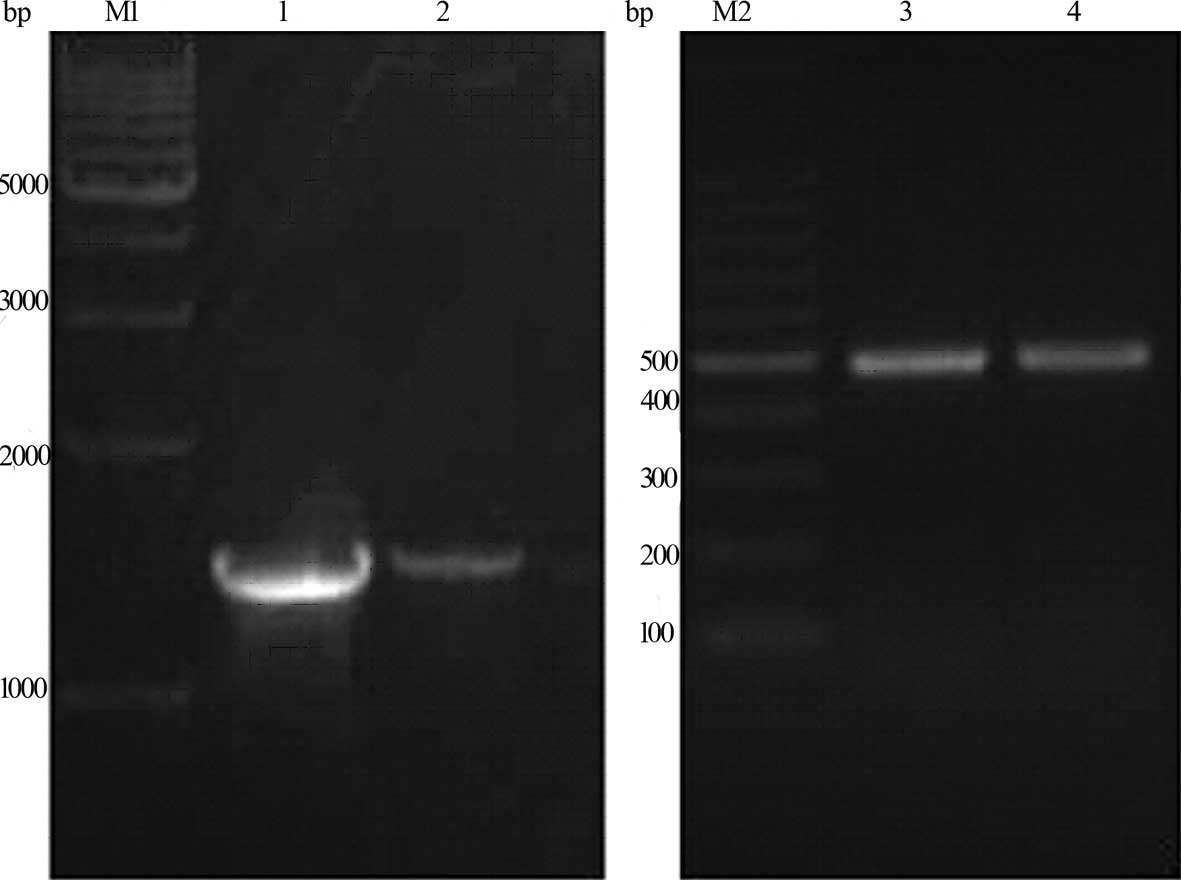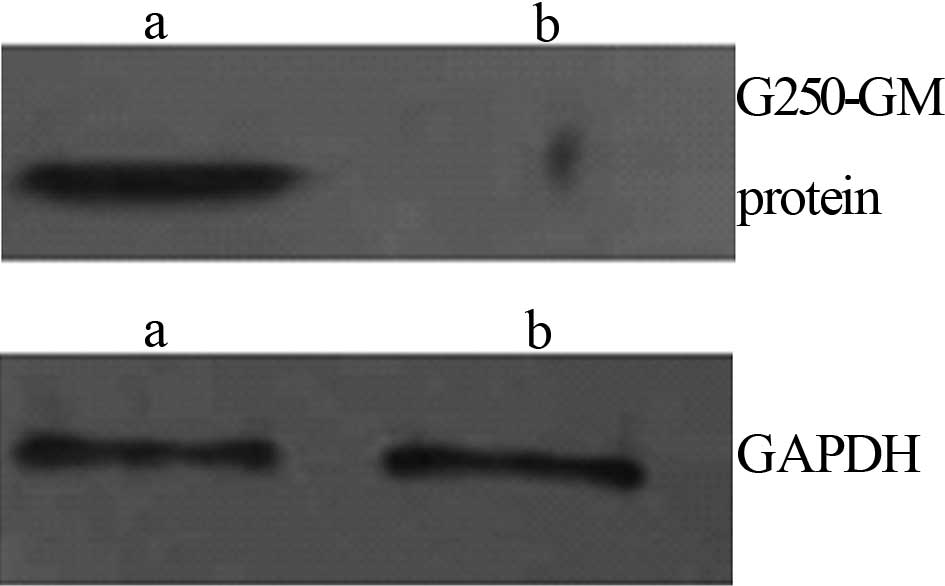Construction of a fusion expression plasmid containing the G250 gene and human granulocyte-macrophage colony stimulating factor and its significance in renal cell carcinoma
- Authors:
- Published online on: December 30, 2010 https://doi.org/10.3892/ol.2010.230
- Pages: 343-347
Metrics: Total
Views: 0 (Spandidos Publications: | PMC Statistics: )
Total PDF Downloads: 0 (Spandidos Publications: | PMC Statistics: )
Abstract
This study aimed to construct a eukaryotic expression plasmid containing the G250/MN/CA IX (G250) and human granulocyte-macrophage colony stimulating factor (hGM-CSF) genes, and to detect the expression of these proteins in vitro by recombinant plasmids in eukaryotic cells. pORF-hGM-CSF and pcDNA3.0-G250 were used as the template to amplify G250 and hGM-CSF by routine polymerase chain reaction (PCR). The two PCR products were cloned into the eukaryotic vector pVAX1, in order to construct a recombinant plasmid pVAX1-G250-hGM, and the plasmid was transfected into human embryonic kidney 293 cells. The protein expression was then determined by immunocytochemi-
stry, atomic force microscopy, ELISA and Western blotting. DNA sequencing showed that the cloned G250 and hGM-CSF sequences were consistent with the reported Gene Bank ones. Moreover, a high expression was noted following recombinant plasmid transfection of the G250 and hGM-CSF proteins. Thus, the eukaryotic expression vector pVAX1-G250-hGM containing G250 and hGM-CSF was constructed, allowing for the investigation of the anti-G250 antigen vaccine and immune response mechanisms of biological immunotherapy in renal cell carcinoma.















